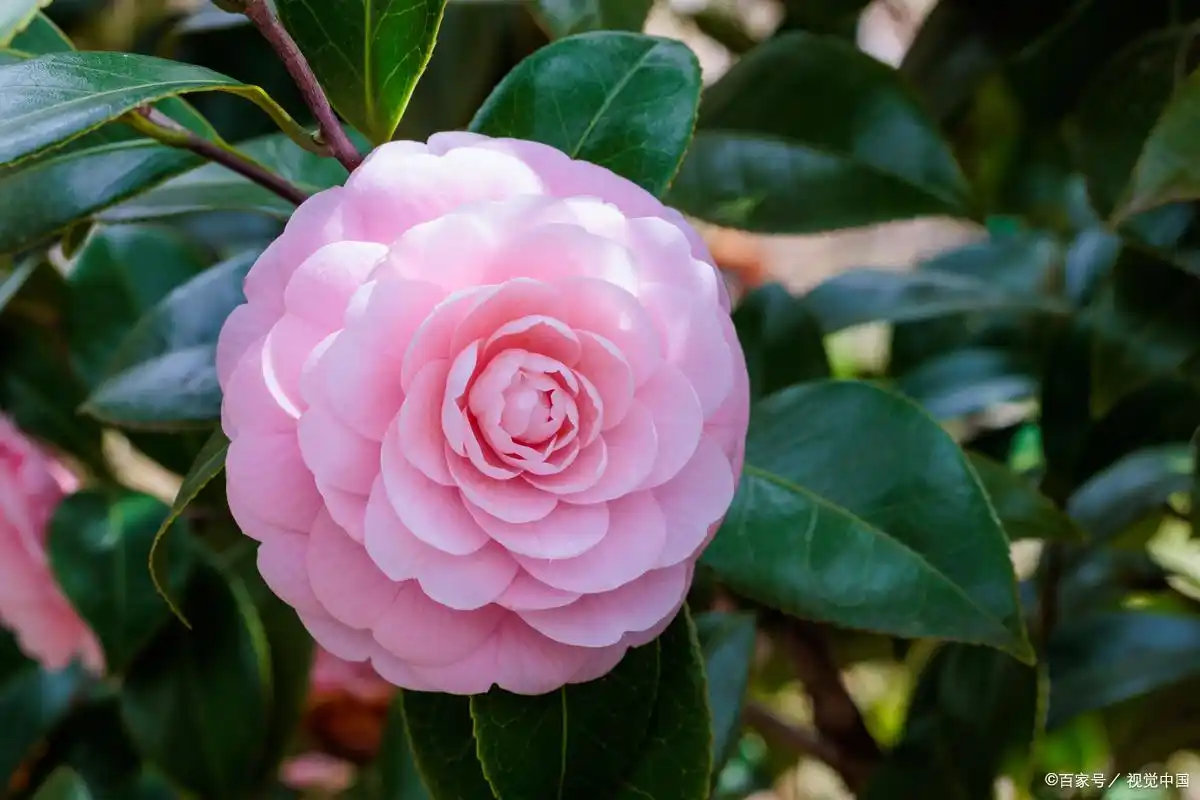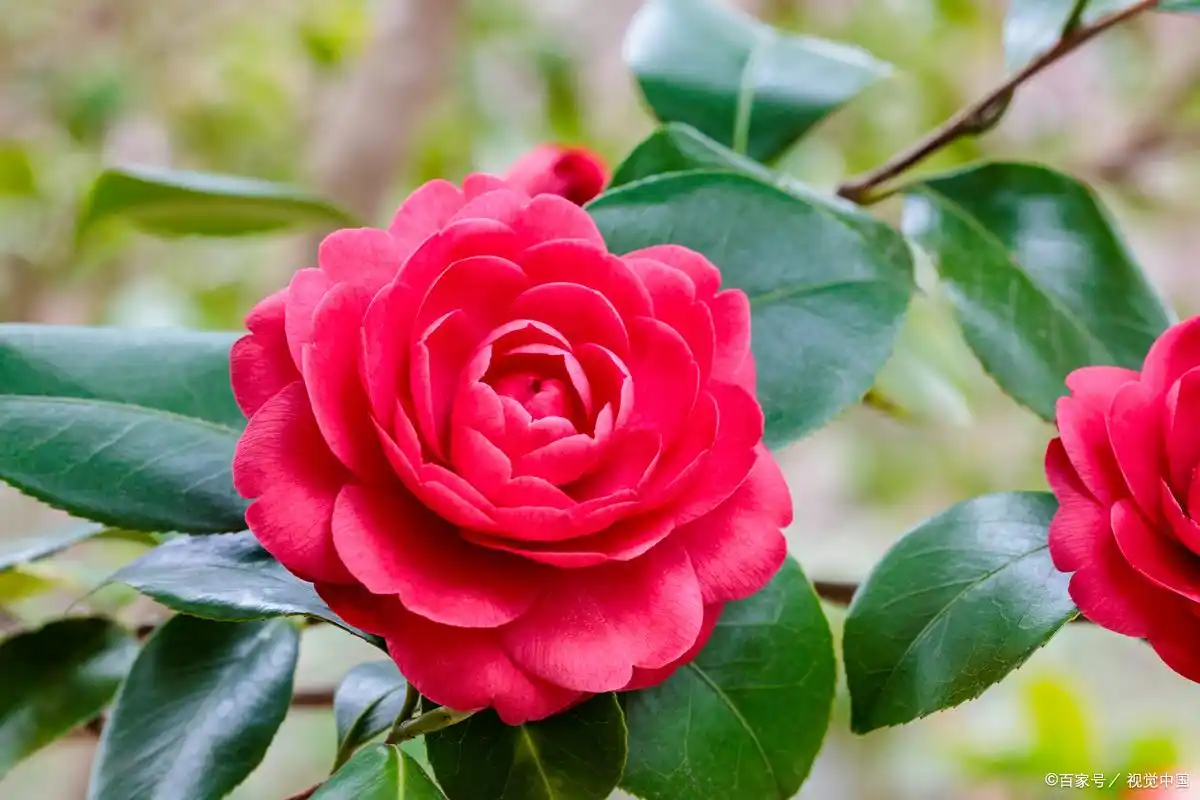Only Camellia Flower is more durable, and the green bush has several red branches. ”Camellia Flower, with its elegant flower posture and bright colors, has become a favorite among many flower enthusiasts. However, many people are often troubled by problems such as yellow leaves, fallen buds, and failure to bloom during breeding. Do you want Camellia Flowers to bloom beautifully on your balcony? The key is to master scientific breeding methods and avoid maintenance misconceptions. Below, we will provide a detailed analysis of the breeding tips and precautions for Camellia Flower sinensis.
1. Soil selection: Build a solid foundation for growth

Camellia Flower prefers acidic, loose, fertile, and well drained soil, with a pH value of 5.5-6.5 being the most ideal.
. If the soil is too alkaline, Camellia Flower are prone to yellowing of leaves and stunted growth. The cultivation soil can be mixed with humus soil, peat soil, and perlite in a ratio of 5:3:2, and then a suitable amount of decomposed organic fertilizer such as chicken manure and sheep manure can be added to provide sufficient nutrients for Camellia Flower.Precautions:
It is recommended to change the potting soil for Camellia Flower every 1-2 years to prevent soil compaction and reduced fertility.
. When changing pots, be careful to remove the plants from the old pots, cut off some old and rotten roots, and then plant them in new soil. After pouring the root fixing water thoroughly, place them in a cool and ventilated place to slow down the seedlings.2. Watering techniques: precise control of dryness and wetness
Camellia Flower has strict water requirements, fearing both drought and waterlogging.
. During spring and autumn, water the soil every 2-3 days to keep it slightly moist; In summer, the temperature is high and water evaporates quickly. Watering should be done once a day in the morning and once in the evening, while spraying water around the plants to increase air humidity; In winter, the temperature is low and Camellia Flower grows slowly. Watering once every 7-10 days is sufficient. Watering should follow the principle of "see dry, see wet", that is, wait until the soil surface is dry before watering thoroughly to avoid water accumulation and root rot.Pain points for maintenance:
If the edges of Camellia Flower leaves are found to be dry, it is likely due to water shortage and timely hydration is needed;
; If the leaves turn yellow and the soil is moist, it may be due to excessive watering. Water should be stopped immediately and the plant should be moved to a well ventilated area to accelerate water evaporation.III. Light Management: Follow the principle of moderation
Camellia Flower prefers semi shade and avoids direct sunlight.
. In spring and autumn, it can be placed on a south facing balcony or window to receive sufficient scattered light; In summer, the sun is strong, so it is necessary to use shade nets to prevent leaf burns; In winter, if the light is weak, the plants can be moved indoors to a well lit area to ensure 4-6 hours of light per day.Precautions:
Long term placement of Camellia Flower in dark places can easily lead to excessive plant growth, reduced flowering, and light color.

Excessive exposure to sunlight can cause the leaves to turn yellow and dry. Therefore, it is necessary to adjust the placement of Camellia Flower in a timely manner based on seasonal and weather changes.
IV. Fertilization Points: Precise Nutrient Supply
Camellia Flower grow vigorously and require regular fertilization to supplement nutrients.
. During the sprouting period of new shoots in spring, apply thin nitrogen fertilizer every 10-15 days to promote branch and leaf growth; During the flower bud differentiation period from May to June, increase the application of phosphorus and potassium fertilizers, such as potassium dihydrogen phosphate solution, spray foliar fertilizer every 7-10 days, and apply decomposed cake fertilizer and water again every month to assist in flower bud differentiation; Applying phosphorus and potassium fertilizer again before flowering can make the flowers bigger and more beautiful; In winter, Camellia Flower enter a dormant period and fertilization needs to be stopped.Pain points for maintenance:
Apply thin fertilizer frequently and be careful not to burn roots with concentrated fertilizer.
. If the leaves turn yellow or wither after fertilization, immediately water the potting soil with plenty of water to dilute the soil fertilizer concentration.Fifth, Temperature and Humidity: Create a comfortable environment
The suitable temperature for Camellia Flower growth is 18-25 ℃, and the suitable temperature for flowering is 10-20 ℃.
. When the temperature is below 0 ℃, Camellia Flowers are prone to freezing damage and need to be moved indoors in a timely manner to keep warm; In summer, when the temperature exceeds 32 ℃, it is necessary to strengthen ventilation and cooling to avoid affecting the growth of plants due to high temperatures. In addition, Camellia Flower prefers environments with high air humidity, and it is best to keep the air humidity between 60% and 80%. During the dry season, air humidity can be increased by spraying water around plants or placing water basins.Precautions:
During winter indoor maintenance of Camellia Flower, do not place them at the air conditioning or heating vents to prevent the air from becoming too dry;
; When cooling down in summer, do not directly water plants with cold water to avoid damaging the roots due to excessive temperature differences.6. Disease and pest control: Prevention is better than cure
Common diseases of Camellia Flower include anthracnose, leaf spot disease, etc., and pests include aphids, red spider mites, etc.
. Daily ventilation and light transmission should be strengthened to ensure good air permeability between plants and reduce the probability of disease and pest occurrence. In the early stages of the disease, anthracnose and leaf spot can be prevented and treated with fungicides such as carbendazim and methyl tobramycin; Aphid and spider can be controlled by spray with imidacloprid, abamectin and other insecticides.Pain points for maintenance:
Once pests and diseases are discovered, the diseased plants should be isolated in a timely manner to prevent transmission to other flowers.
. Meanwhile, strictly follow the instructions of the medication to avoid damaging the plants due to improper use.Master the above methods and precautions for cultivating Camellia Flower, avoid common maintenance misconceptions, and believe that you can also make Camellia Flower bloom brilliantly on your own balcony.
. What other difficulties have you encountered during the breeding process? Welcome to leave a comment in the comment section to share your flower cultivation experience and create a beautiful garden together!